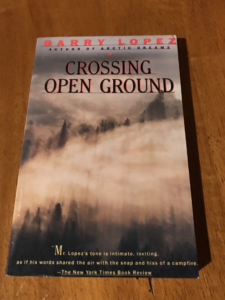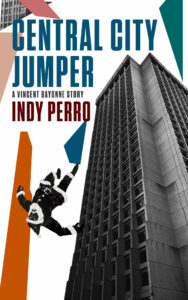From the story collection The Angel Esmerelda by Don DeLillo
Summary:
An unnamed woman attends a Gerhard Richter exhibit at an unnamed art museum or gallery. She senses a man in the room. The man questions her, and their conversation spins through their response to the art, their lives, their identities, etc. They appear at a snack bar, discussing themselves. They appear at her apartment where something of a sexual encounter occurs, shifting the perception of the situation.
Analysis:
The title of the story refers to a controversial art exhibit of Gerhard Richter’s series of 15 paintings titled “October 18, 1977.”
On October 18, 1977, Andreas Baader, Jan-Carl Raspe, and Gudrun Ensslin were found dead in their cells in a Stuttgart prison. They were members of the Red Army Faction, a coalition of young political radicals led by Baader and Urlike Meinhof, who had earlier hanged herself in police custody. In the late sixties, the Baader-Meinhof group had become feared terrorists in Germany. Although the prisoners’ deaths were officially pronounced suicides, the authorities were suspected of murder.
The fifteen works in October 18, 1977 are based on newspaper and police photographs or television images of moments in the lives and deaths of four members of the Red Army Faction. Richter’s reworking of documentary sources is dark, blurred, and diffuse. Shades of gray dominate. The images are thirdhand, recreations of recreations, and they’ve lost degrees of specificity and particularity. Through the images, we’re reminded that we don’t see reality clearly. We don’t know the subjects’ fates, and we don’t know the truth of the political reality in which they lived or in which they’re remembered, considered, contemplated, or perceived. Mass media sublimates emotional content as it happens, and times change. Richter’s exhibit occurred during a more prosperous period, a politically conservative era eleven years after the events.
In the first section, DeLillo’s story takes emotional tones of Richter’s exhibit and reworks them through language, giving a new experience of a theme. If you’ve ever wondered what it would be like to experience an art exhibit through language, read “Baader-Meinhof.” The first time I read the story, I was astounded at DeLillo’s use of language, the ways he moved the reader through a series of engagements with art. My appreciation for the delicacy and ingenuity of the passage has only grown with each reading.
In the second section, DeLillo transitions from the experience of art to the interchange between humans, the way people show themselves, exhibit themselves, and interpret others. We’re still in the museum but we’ve moved to the snack bar, where DeLillo treats us to a middle course, a palette cleansing that leaves the bitterness of the art behind while we wait for the pungent possibility of connection, a connection that feels inevitable, unwarranted, and unwanted.
The final section holds the story in a “loose containment,” which must be read to be felt. No description could do it justice, which is, in some ways, the point. DeLillo’s precise word choice, depth of consideration, and gentle, contemplative pacing opens the experience of postmodern art and the consequence and resonance of human interaction to our, the reader’s, consideration. We might be left raw. We might be left wondering, but we’ve left the filter of mediation behind. We’re prompted to reconcile ourselves to the situation at hand.
Biography:
Don DeLillo is an American novelist, short story writer, playwright, screenwriter, and essayist. In 1985, DeLillo’s publication of White Noise brought widespread attention, and he won the National Book Award for fiction. DeLillo’s work engages the major developments in and influences on late twentieth and early nineteenth century society, a diverse collection of topics that include but are not limited to television, computers, sports, terrorism, mathematics, nuclear power, and nuclear war.





